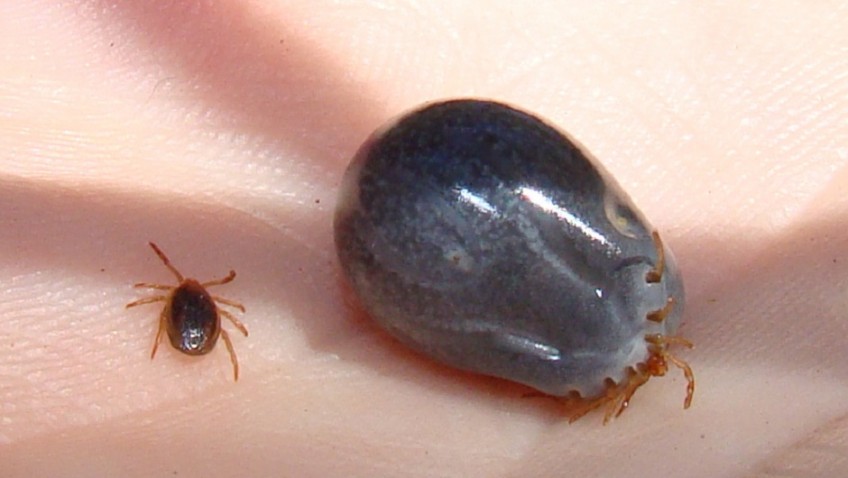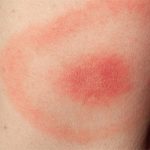Now councils are leaving large expanses of grass uncut to become flower meadows to help the butterflies, insects and other wildlife, there are an increasing number of ticks. Ticks are blood sucking members of the spider family and when they attach to humans they are very small – about the size of a poppy seed. The parasite can be found all over the UK – anywhere in rough vegetation that protects them from drying out.
Not all ticks carry infection, but it is important to check for them and remove any properly without squashing, as soon as possible. Ticks don’t jump or fly, but wait until an animal or person brushes past to climb on. They then bite to attach to the skin and start to feed on the blood. They can be found throughout the year, but are most active between spring and autumn.
Check your skin carefully after a walk – especially moist protected areas like the groin, behind the knee and the hairline of small children. Ticks can be brought into the house on clothing and pets and may find you later. Check your dogs after a walk and leave your outdoor clothes outside or make sure you brush them off well.
Identifying and treating tick bites
To the naked eye the larvae look like minute pale spiders, not much bigger than a full stop. Larvae have six legs and nymphs and adults eight. It is the nymph which is most likely to bite you.
The tick will not necessarily bite immediately, but will often spend some time finding a suitable site on the skin. Once a tick has started to feed, its body will become filled with blood. Adult females can swell to many times their original size. As their blood sacs fill they generally become lighter in colour and can reach the size of a small pea, generally grey in colour If undisturbed, a tick will feed for around 5 to 7 days before letting go and dropping off.
If you do get bitten, removing the tick quickly and correctly can help to reduce any potential risk:
- the safest way to remove a tick is to use a pair of fine-tipped tweezers, or a tick removal tool
- grasp the tick as close to the skin as possible
- pull upwards slowly and firmly, as mouthparts left in the skin can cause a local infection
- once removed, apply antiseptic to the bite area, or wash with soap and water and keep an eye on it for several weeks for any changes
- contact your GP if you begin to feel unwell and remember to tell them you were bitten by a tick or have recently spent time outdoors
The bite is usually painless and most people will only know they have been bitten if they happen to see a feeding tick attached to them.
Lyme Disease
Lyme disease causes a wide range of symptoms in humans which may include a spreading red rash, headaches, a stiff neck, extreme fatigue, muscle and joint pain and light and sound sensitivity.
Symptoms appear on average 10-14 days after a tick bite, so go to your GP promptly if you see a rash or feel ill. Diagnosed and treated at an early stage, it is usually curable with antibiotics but if untreated it can spread to joints, heart and the central nervous system and be more difficult to cure.
For more information about ticks visit the Public Health website.





